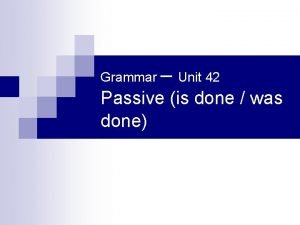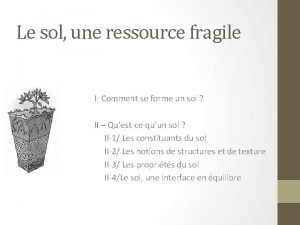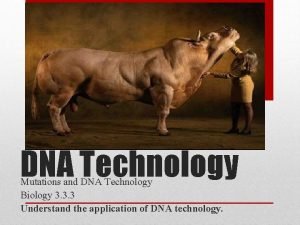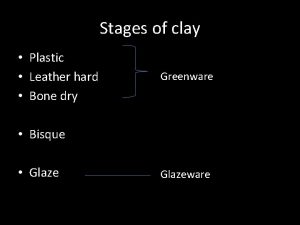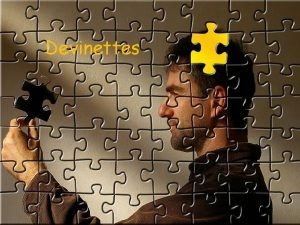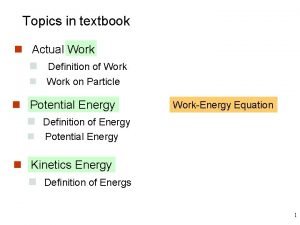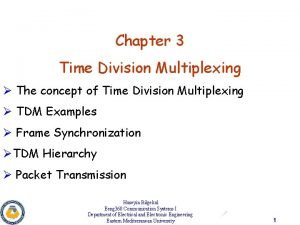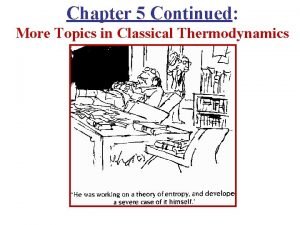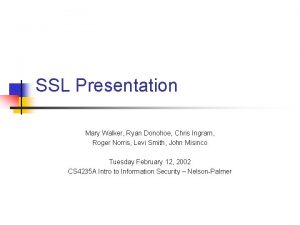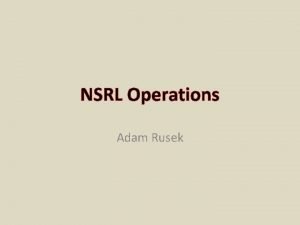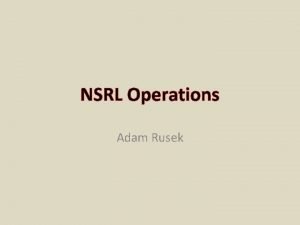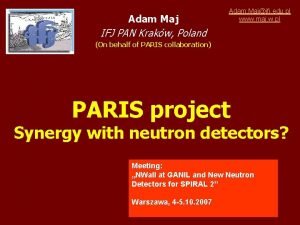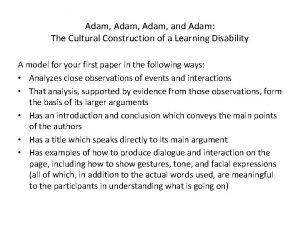Adam Ingram Chris Done P Chris Fragile A













![Modeling the broadband noise ro ri vb vh log [v P (v )] v Modeling the broadband noise ro ri vb vh log [v P (v )] v](https://slidetodoc.com/presentation_image_h/0151f9b7aad9d409f90d34d63168ee2a/image-14.jpg)
![Modeling the broadband noise ro ri vb vh log[v. P(v)] v visc at: Upper Modeling the broadband noise ro ri vb vh log[v. P(v)] v visc at: Upper](https://slidetodoc.com/presentation_image_h/0151f9b7aad9d409f90d34d63168ee2a/image-15.jpg)
![Modeling the broadband noise ro ri vb vh log[v. P(v)] v visc at: Upper Modeling the broadband noise ro ri vb vh log[v. P(v)] v visc at: Upper](https://slidetodoc.com/presentation_image_h/0151f9b7aad9d409f90d34d63168ee2a/image-16.jpg)
![Modeling the broadband noise ro ri vb vh log[v. P(v)] v visc at: Upper Modeling the broadband noise ro ri vb vh log[v. P(v)] v visc at: Upper](https://slidetodoc.com/presentation_image_h/0151f9b7aad9d409f90d34d63168ee2a/image-17.jpg)




























- Slides: 45

Adam Ingram Chris Done P Chris Fragile A physical interpretation of variability in X-ray binaries Durham University

The truncated disc model Cool, optically thick disc thermalises to emit a multi coloured black body spectrum XTE 1550 -564 Hot electrons in high scale height, optically thin flow Compton upscatter disc seed photons to give power law emmission Moving truncation radius varies the number of seed photons seen by the

The truncated disc model XTE 1550 -564 Moving truncation radius varies the number of seed photons seen by the

The truncated disc model XTE 1550 -564 Moving truncation radius varies the number of seed photons seen by the

The truncated disc model XTE 1550 -564 Moving truncation radius varies the number of seed photons seen by the

The truncated disc model XTE 1550 -564 Moving truncation radius varies the number of seed photons seen by the

The truncated disc model XTE 1550 -564 Moving truncation radius varies the number of seed photons seen by the

The truncated disc model XTE 1550 -564 Moving truncation radius varies the number of seed photons seen by the

The truncated disc model XTE 1550 -564 Moving truncation radius varies the number of seed photons seen by the

Summary of variability features XTE 1550 -564 Red = above 10 ke. V Black = total νQPO

Summary of variability features XTE 1550 -564 νb νQPO νh Red = above 10 ke. V Black = total

Summary of variability features XTE 1550 -564 νb νQPO νh Red = above 10 ke. V Black = total Want to explain QPO AND the broadband noise continuum

QPO Model: Lense -Thirring precession of the flow a *=0. 9 a *=0. 5
![Modeling the broadband noise ro ri vb vh log v P v v Modeling the broadband noise ro ri vb vh log [v P (v )] v](https://slidetodoc.com/presentation_image_h/0151f9b7aad9d409f90d34d63168ee2a/image-14.jpg)
Modeling the broadband noise ro ri vb vh log [v P (v )] v visc at: Lense-Thirring QPO (Ingram, Done & Fragile 2009 – IDF 09) log[ v ]
![Modeling the broadband noise ro ri vb vh logv Pv v visc at Upper Modeling the broadband noise ro ri vb vh log[v. P(v)] v visc at: Upper](https://slidetodoc.com/presentation_image_h/0151f9b7aad9d409f90d34d63168ee2a/image-15.jpg)
Modeling the broadband noise ro ri vb vh log[v. P(v)] v visc at: Upper and lower k. Hz QPOs: is the upper the Keplerian frequency at the truncation radius (e. g. Stella & Veitri 1998)? Lense-Thirring QPO (Ingram, Done & Fragile 2009 – IDF 09) log[v]
![Modeling the broadband noise ro ri vb vh logv Pv v visc at Upper Modeling the broadband noise ro ri vb vh log[v. P(v)] v visc at: Upper](https://slidetodoc.com/presentation_image_h/0151f9b7aad9d409f90d34d63168ee2a/image-16.jpg)
Modeling the broadband noise ro ri vb vh log[v. P(v)] v visc at: Upper and lower k. Hz QPOs: is the upper the Keplerian frequency at the truncation radius (e. g. Stella & Veitri 1998)? Lense-Thirring QPO (Ingram, Done & Fragile 2009 – IDF 09) log[v]
![Modeling the broadband noise ro ri vb vh logv Pv v visc at Upper Modeling the broadband noise ro ri vb vh log[v. P(v)] v visc at: Upper](https://slidetodoc.com/presentation_image_h/0151f9b7aad9d409f90d34d63168ee2a/image-17.jpg)
Modeling the broadband noise ro ri vb vh log[v. P(v)] v visc at: Upper and lower k. Hz QPOs: is the upper the Keplerian frequency at the truncation radius (e. g. Stella & Veitri 1998)? Lense-Thirring QPO (Ingram, Done & Fragile 2009 – IDF 09) log[v]

Analysis of 4 U 1728+34 and 4 U 0614+09 • Atolls show k. Hz QPOs – assume v uk. Hz = v kep (r o ) (e. g. Stella & Vietri 1999) • Therefore, we can “SEE” the truncation radius! Assume: v visc (r) ~ α(h/r) 2 = Ar -β …but the parameters can change throughout the evolution of the spectrum vh Data from van Straaten et al (2002) ri Ingram & Done (2010)

Analysis of 4 U 1728+34 and 4 U 0614+09 • Atolls show k. Hz QPOs – assume v uk. Hz = v kep (r o ) (e. g. Stella & Vietri 1999) • Therefore, we can “SEE” the truncation radius! Assume: v visc (r) ~ α(h/r) 2 = Ar -β …but the parameters can change throughout the evolution of the spectrum vh Data from van Straaten et al (2002) ri Ingram & Done (2010)

Analysis of 4 U 1728+34 and 4 U 0614+09 • Atolls show k. Hz QPOs – assume v uk. Hz = v kep (r o ) (e. g. Stella & Vietri 1999) • Therefore, we can “SEE” the truncation radius! Assume: v visc (r) ~ α(h/r) 2 = Ar -β …but the parameters can change throughout the evolution of the spectrum vh Data from van Straaten et al (2002) ri Ingram & Done (2010)

Analysis of 4 U 1728+34 and 4 U 0614+09 • Atolls show k. Hz QPOs – assume v uk. Hz = v kep (r o ) (e. g. Stella & Vietri 1999) • Therefore, we can “SEE” the truncation radius! Assume: v visc (r) ~ α(h/r) 2 = Ar -β …but the parameters can change throughout the evolution of the spectrum vh Data from van Straaten et al (2002) ri Ingram & Done (2010)

Analysis of 4 U 1728+34 and 4 U 0614+09 v h = v visc (r i) = Ar i-β => r i = [A/ v h ]1/β ~ r *

Analysis of 4 U 1728+34 and 4 U 0614+09 v h = v visc (r i) = Ar i-β => r i = [A/ v h ]1/β ~ r * => r * ~ 4. 5 Rg ~ 9. 2 km

Testing Lense -Thirring precession • ζ=0 works quite well

Testing Lense -Thirring precession • ζ=0 works quite well • Increasing very well! ζ works

Conclusions • Use model designed to describe the energy spectra in order to explain – the LF QPO, – the broadband noise continuum and – the uk. Hz QPO • This also predicts the sigma-flux relation and time lags between hard and soft X-ray bands

Thank you!

Lense-Thirring precession • • An orbiting particle can be described by the coordinates φ(t), θ(t) and r(t) which vary periodically with frequency, ν In Newtonian orbits νφ = νθ = νr which gives elliptical orbits with fixed axes and fixed orbital plane. νφ ≠ νr => z r y θ φ x y x Precession of an ellipse

Lense-Thirring precession • • An orbiting particle can be described by the coordinates φ(t), θ(t) and r(t) which vary periodically with frequency, ν In Newtonian orbits νφ = νθ = νr which gives elliptical orbits with fixed axes and fixed orbital plane. νφ ≠ νθ => z z r θ φ x y Lense -Thirring precession

Where is the inner edge? • • The surface density is influenced by the shape of the flow Warps propagated by bending waves which: • allow solid body precession, • give it a weird shape at small r! λ α r 9/4 a*-1/2 • Waves can turn over at r~ λ/4 so this is where the shape goes weird! ri α ri 9/4 a*-1/2 ri α a*2/5

Solid body precession of the flow • But we’re NOT looking at point particles! Optically thin flow Optically thick disc Geometrically thick, advection prominent, hard spectrum Geometrically thin, blackbody spectrum Warps from differential twisting communicated by wavelike diffusion Warps from differential twisting communicated by viscous diffusion Warps propagated outwards at the local sound speed Warps propagated outwards at the local viscous speed Sound crossing timescale < precession timescale Viscous timescale < precession timescale only at small r Flow precesses as a solid body Bardeen-Petterson effect

Solid body precession of the flow

Solid body precession of the flow

Solid body precession of the flow

Solid body precession of the flow

Solid body precession of the flow

Solid body precession of the flow

Solid body precession of the flow

Solid body precession of the flow

Modelling the broadband noise × • Large scale height flow => MRI fluctuations • In a given annulus of the flow, the MRI produces a white noise of fluctuations • Mass accretion rate (luminosity) cannot vary on shorter timescales than the local viscous timescale (flow response) e. g. Balbus & Hawley 1998 = e. g. Psaltis & Norman 2000 This gives the noise spectrum GENERATED at each

Propagating fluctuations This gives the noise spectrum EMMITED at each annulus e. g. Lyubarskii 1997; Arevalo & Uttley

Total power spectrum νb νh Therefore, this model gives: ν b =ν visc (r o ) ν h =ν visc (r i)

Black holes vs Neutron stars XTE 1550 -564 νb νQPO νh Red = above 10 ke. V Black = total

Black holes vs Neutron stars 4 U 1728 -34 νb νQPO All frequencies slightly higher, consistent with mass scaling νuk. Hz (ν lk. Hz ) νh

QPO Model: Lense -Thirring precession of the flow a *=0. 9 a *=0. 5
 Ingram ready mix concrete prices
Ingram ready mix concrete prices Unit 42 passive 1
Unit 42 passive 1 Disadvantages of size reduction
Disadvantages of size reduction Yiğit olan döne döne dövüşür sözleri
Yiğit olan döne döne dövüşür sözleri Adam adam facebook
Adam adam facebook Agile is fragile
Agile is fragile Composition du sol
Composition du sol Agile ceremonies
Agile ceremonies Fragile x syndrome female
Fragile x syndrome female Public opinion in pr
Public opinion in pr Fragile x syndrome baby
Fragile x syndrome baby He clattered and clanged as he washed the dishes
He clattered and clanged as he washed the dishes Fragile comparative and superlative
Fragile comparative and superlative Our fragile earth reflection
Our fragile earth reflection Greenware stage of clay
Greenware stage of clay Klinefelter syndrome
Klinefelter syndrome On me prend sans me toucher qui suis-je
On me prend sans me toucher qui suis-je Our fragile earth reflection
Our fragile earth reflection Microorchidie
Microorchidie Ingram partner portal
Ingram partner portal Section 3(1) of the partnership act 1961
Section 3(1) of the partnership act 1961 Hp partner portal
Hp partner portal Ingram micro link
Ingram micro link First baptist church denbigh
First baptist church denbigh David ingram citi
David ingram citi Ingram micro rma
Ingram micro rma Spla usage report
Spla usage report Actual work done
Actual work done Unit 46 have something done
Unit 46 have something done Work done by a varying force
Work done by a varying force Jobs to be done templates
Jobs to be done templates Killing done with malice but without premeditation
Killing done with malice but without premeditation Tdm block diagram
Tdm block diagram Which statement defines the purpose of iteration planning?
Which statement defines the purpose of iteration planning? It is an activity done for enjoyment.
It is an activity done for enjoyment. Standardisation of sodium hydroxide
Standardisation of sodium hydroxide The work done by gravity during the descent of a projectile
The work done by gravity during the descent of a projectile Having been done
Having been done Late charges in front office
Late charges in front office Were you at the beach last weekend? b : no, i _____
Were you at the beach last weekend? b : no, i _____ This water sport is done on rough river waters. *
This water sport is done on rough river waters. * Chipotle ssr
Chipotle ssr Adiabatic process work done
Adiabatic process work done Forms of energy
Forms of energy Can a food additive increase egg production
Can a food additive increase egg production Locomotor dance definition
Locomotor dance definition

